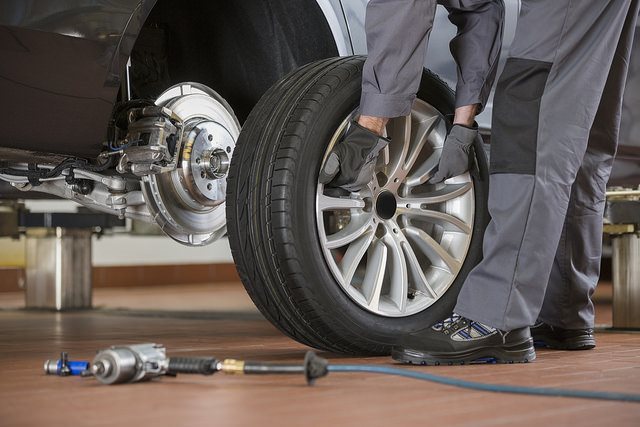A replacement of tires provides a comfortable and safe driving experience; however, not everyone knows when it is the optimal time to do the replacement. An old and worn protector might have been OK for dry asphalt, but in the rainy season, driving a car, even an amazing one such as BMW 320i, with worn tired would be dangerous due to the reduction of adhesion to the surface. A winter tire set is also inappropriate for the heated dry road. The use of tires out of season increases the braking distance and the tread wears out faster.
The Best Time to Install Winter Tires
Car owners usually change tires in the offseason, but an offseason is a fairly broad concept and every motorist has their own schedule. The autumn weather is unpredictable and the Indian summer can change into frosts and heavy rains very fast. It is the sudden deterioration of weather conditions that makes dangerous the delay of winter tires replacement.

The first snow always paralyzes inexperienced drivers who did not have time to repace the tires on their vehicles. Such unexpected snow can cause an accident. There is a deeply rooted misconception that winter tires are only suitable for driving in the snow or in the subzero temperatures. However, this is not the case. The problem is with the vulcanizate composition. Summer tires start solidifying when it is +7°C, which leads to a decrease in adhesion to the road surface and extend the braking distance by half. However, the most dangerous thing for summer tires is the cold.
Suitable time to install a winter set of tires can be calculated from the average temperature. If the average weather per day is + 7 ° C and below – it is time to replace the tires. If the thermometer reaches 1°, you cannot drive a car at all, as it might be dangerous.
For regions where the cold weather comes earlier and winter is characterized by severe frosts and increased snowfall, studded tires would be the best option. Such tires can securely hold the car on the ice or snow. This type of vulcanizate has a multi-layer tread and the material is stronger than that in conventional winter tires.
When it is Time to Switch to Summer Tires
The spring tire replacement is also individual for each car owner. But the main landmark is the weather. Winter tires are softer due to the composition as compared with summer tires and they wear out faster on the dry asphalt and have a higher braking distance. If the roads are covered with snow or frost, winter tires are not in danger: the spikes will remain intact even if the temperature is above zero.
The relevance of replacing tires also depends on the time of day during which you drive a car. If it is early mornings and evenings when the temperature falls – switching to summer tires might be premature. However, when the average temperature reaches +1C – the studded tires must be replaced.
Summing up, we hope you liked our article. In addition, we recommend you check out some best offers on Mercedes Benz if you are looking for a new car.




